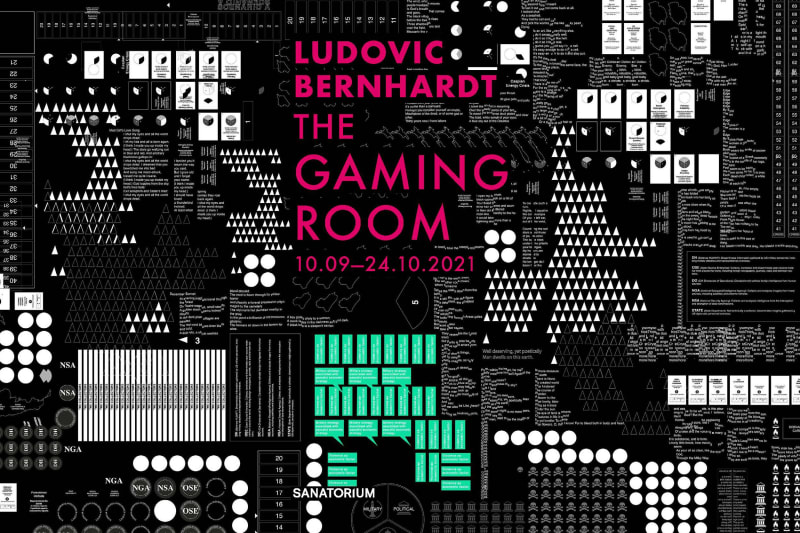Night Music 1 (CIA Game) is based on a board game that was created and used by the Central Intelligence Agency of the United States to train its agents. The artist redesigns the game –perhaps as a “de-training” tool– to deconstruct the elements of war, politics and economics as represented in the game, decentralizing and deterritorializing its vision of the world. Leaking into the operative elements of the game, the work dismantles the preassigned terms, conditions, conditionings, and thus disrupts its intended use and parasites its semiotic context informed by geopolitical and economic interests. The recomposition evokes a chaotic sphere of the global labyrinth for an exploration without apparent rules or a desired end.
A series of cartographic experimentation disturbs the strategically designed aspects of maps and games, creating a rhizomatic transcription of events, as reflected in the second version of Chaos Game. It is an intentionally dysfunctional board game that raises questions around the Haitian Revolution of 1791-1804, the first successful slave revolt resulting in the independence of Haiti. Known as a sugar island, Haiti was a French island colony which was one of the largest producers of sugar cane and main destinations of slave trade at the time. The eighteenth-century world market for sugar, or the “white gold”, was built by competing colonial empires, through the institution of slavery, as it drove trade in goods and people and fueled the wealth of certain nations. The work implies a disorientation with the graphic and geographic codes to form a “chaos-cartography”, connecting it to a wider web of significance in relation to the capitalocentric imageries of the world. In the concrete poetry Ruins, Ruines, Ruinen, खंडहर, རུཨིན་, the artist, by using the very signs of an accumulative erosion, conveys a paradoxical tension within an artistic-poetic construction: a process of (de)construction with ruins.
In reference to William Burroughs’ speculation that the language itself is a virus invading and transforming the organism, Franco ‘Bifo’ Berardi asks whether it can precisely be a virus to reconnect language with sensibility and concreteness of the material world. The virus, according to Berardi, is part of the complexity of chaos that overcomes our ability to understand and govern, it is the exercising of poetic imagination that transforms the set of what is probable. Not a utopia, but a reconfiguration of what is possible: “Poetry introduces a-signifying fragments of a chaotic decomposition and a chaosmatic recomposition of meaning into language.”1
“The Gaming Room” has a poetic dimension that marks the exhibition as an experience of rhizomatic networks, felt also in the multitude of narratives woven among the pieces that compose the exhibition. The artist takes the indicators of economic and political speculation, and (de)fuse them with linguistic and artistic speculation, opening the works up for a personal and, possibly, collective imagination: an ambiguous yet emanating state of becoming.
1 Franco ‘Bifo’ Berardi, Fenomenologia della fine, Roma: Nero Editions, 2020.

